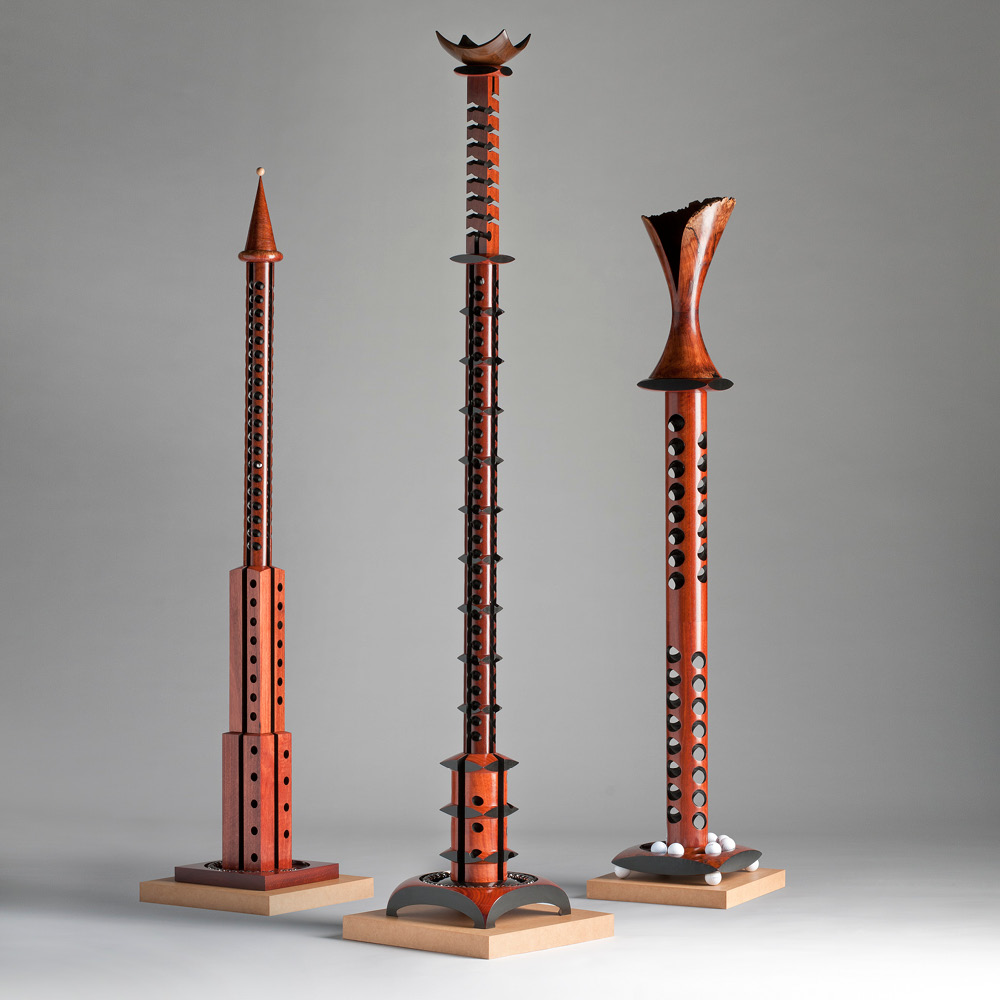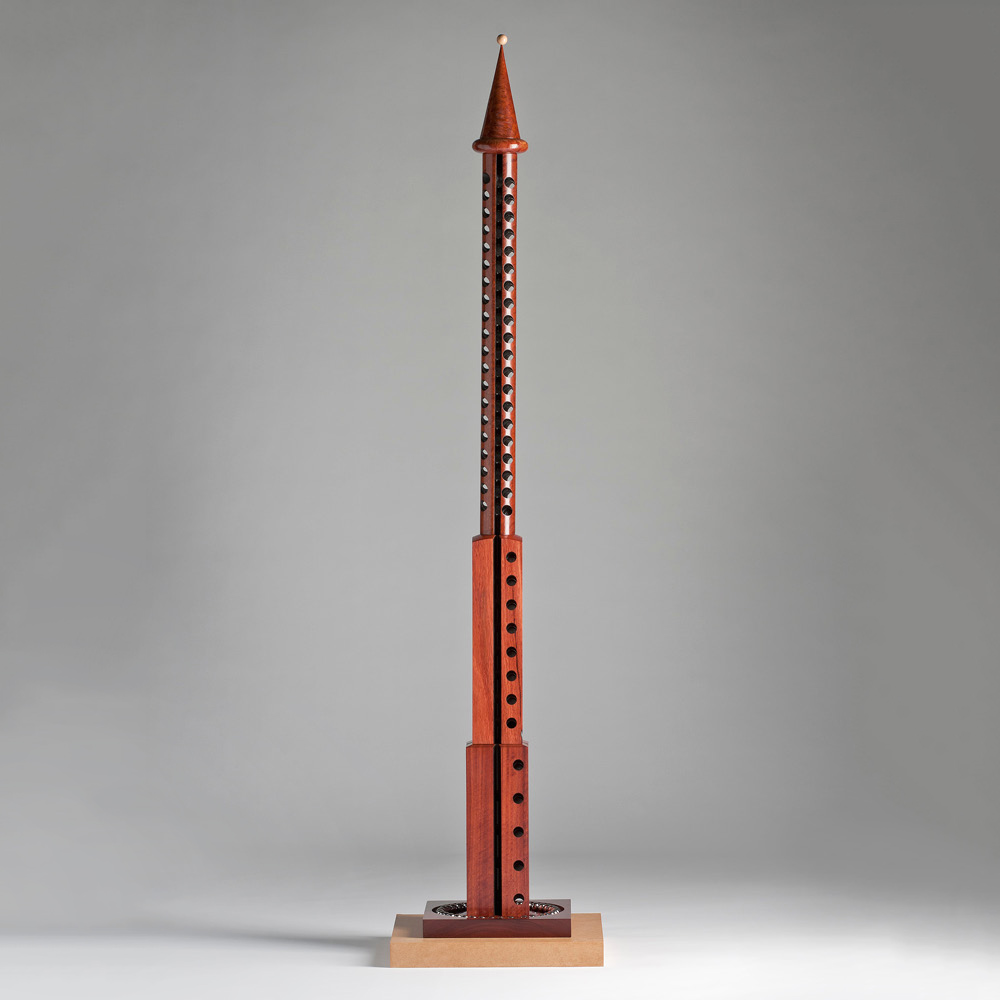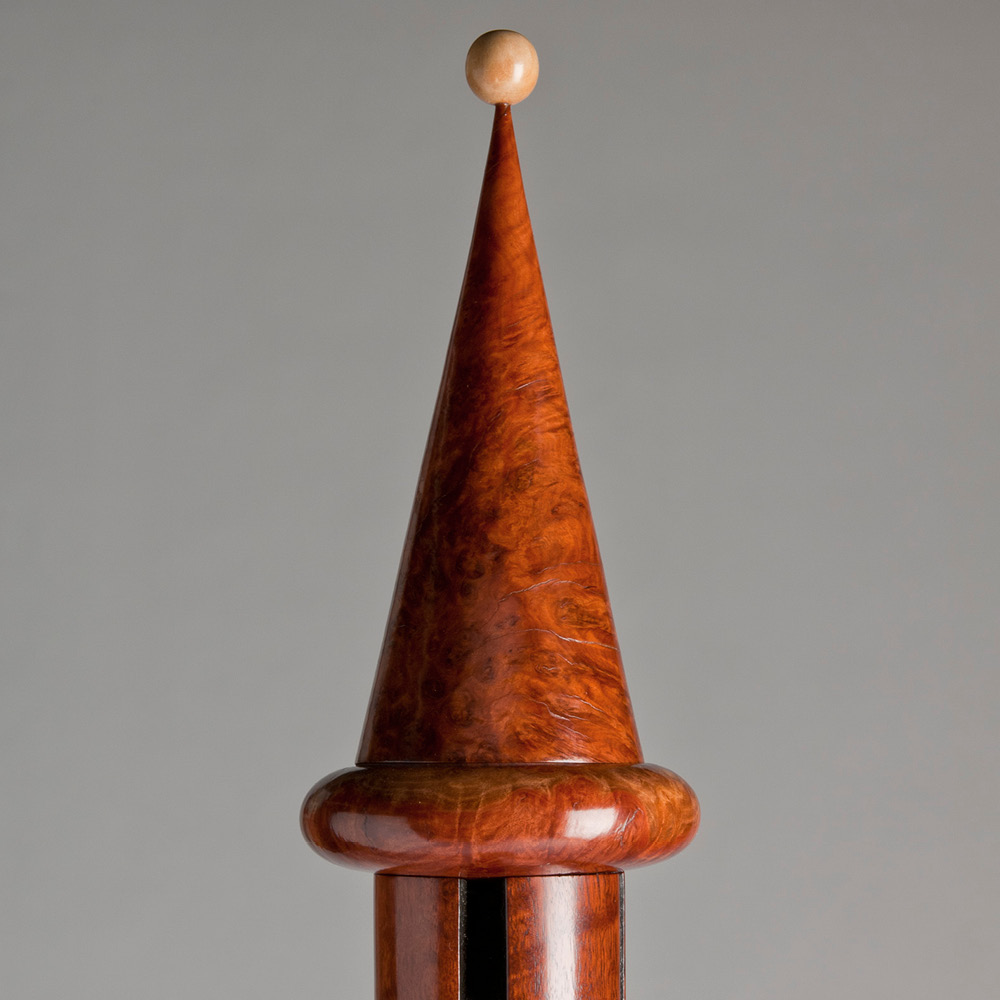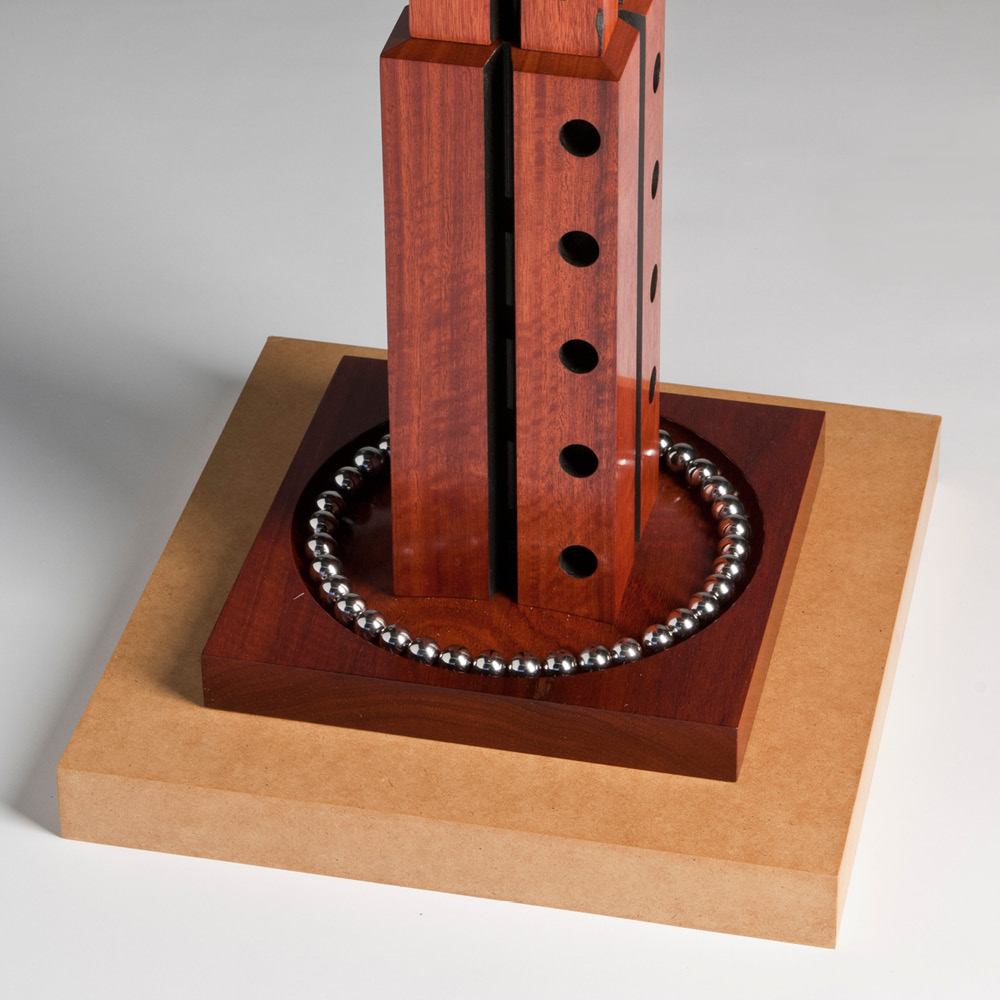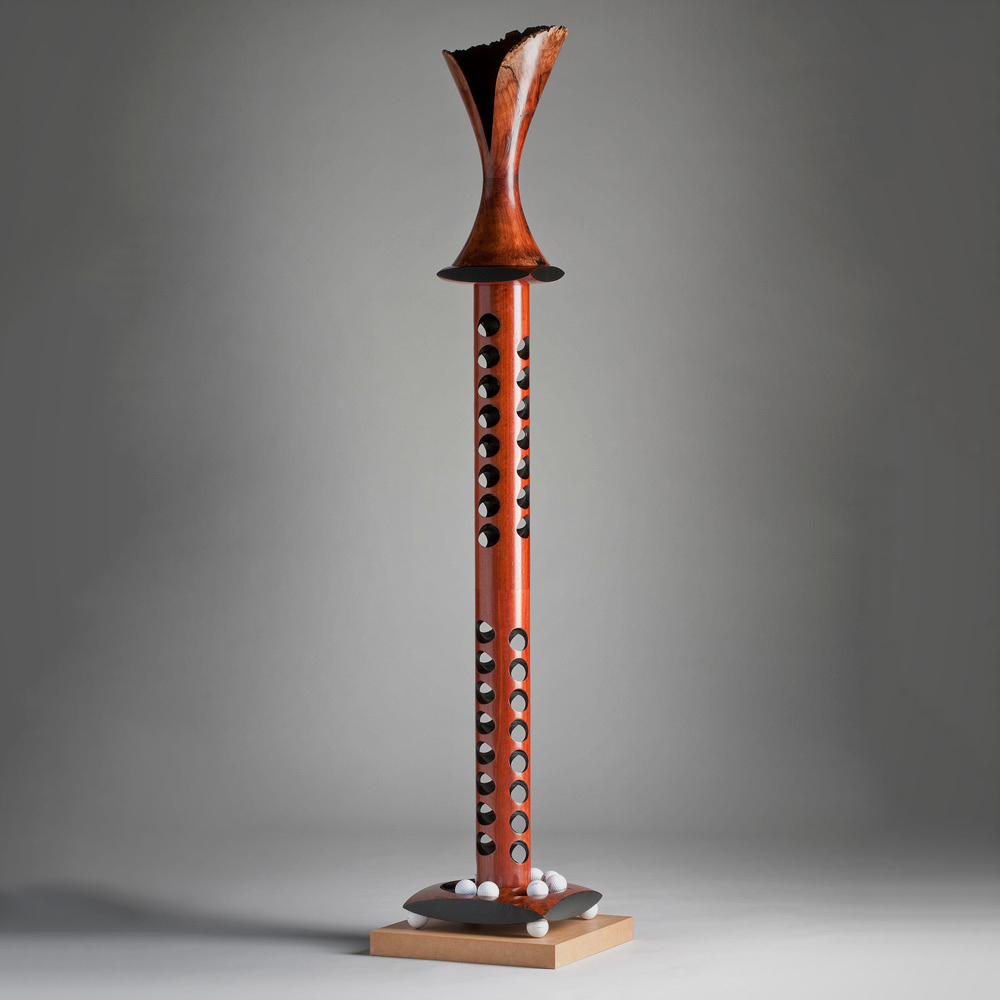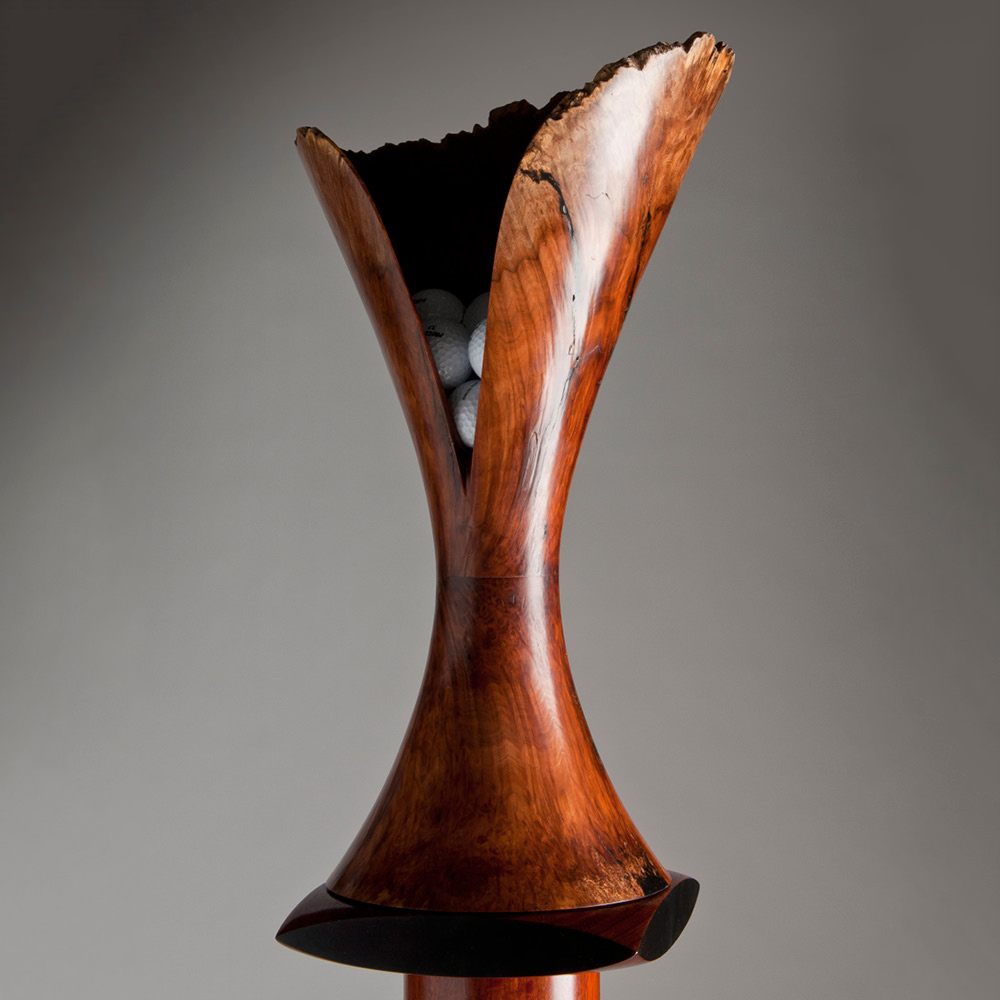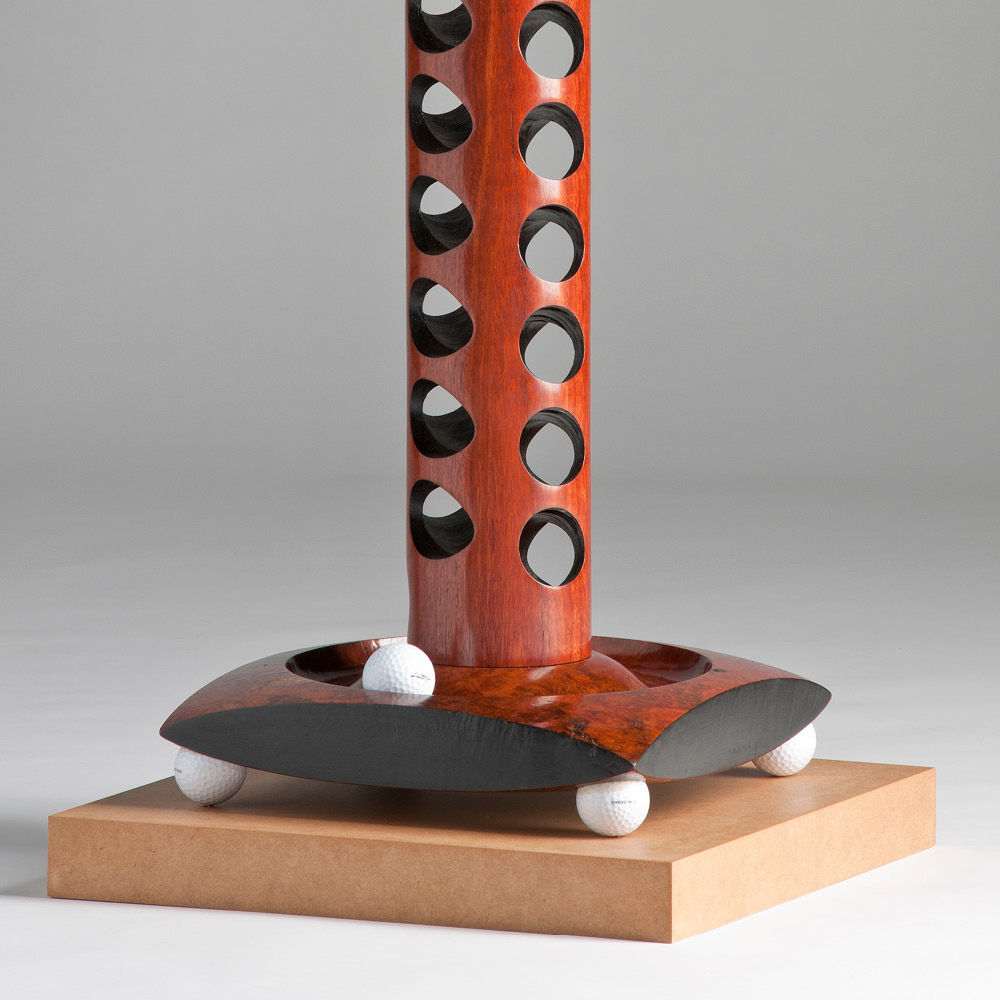One of the most successful and popular items in the Gallery over the years has been the marble tower, played with by children and adults alike. And after years of not being available they are undergoing a revival.
Twenty years ago Anton Meerman, then completing his Honours course at the Canberra School of Art Wood Workshop, arrived at the Gallery with some ten marble towers, each individual, charming and whimsical. They were very popular with our visitors to the Gallery and for many years we had just the one that is always available to amuse children while their parents take in what the Gallery has to offer.
I have been wanting to replicate something like those marble towers ever since, particularly in the context of playfully mocking urban architectural pretensions, and how you end your super skyscraper, up there on top, I’m having a bit of a play with that. The Empire State and Chrysler buildings, they captured the obvious, the point. And those buildings are glorious and that’s perhaps the virtue of being first on the block. Art Deco had a good sense of where it wanted to go, more consensus back then I think. Today, I’m not quite so sure, maybe more like conforming. Modern cities are looking somewhat the same.
Towers in society go way back to mythical times and were often places of fortification and entrapment. Moving towards more serious concerns, a speculation by Dr Tim Flannery in his book Here on Earth: an Argument for Hope muses on whether humanity counts as a super-organism, somewhat like Fire Ants. This classification is usually reserved for bees and ants, but their nests and society are strikingly similar to our mega cities and to the human species.
I provided drawings, and the timber machined to specifications. Jamie Prior drilled the holes, and Jim Homann did the lathe work. A lot has to do with the angle from hole to hole as to how fast the marble goes down. We wanted to slow it down so its journey lasted longer. The towers gave us the opportunity to play with finishes and colours, and to explore ways to reveal more of the marble‘s spiralling downward path by cutting vertical grooves along the four sides. As the towers evolved and became taller, the architectural playfulness became even more evident, and intriguing.
So from a square section, the four sides, you just keep drilling down, down, down, and then you have options. The drills interconnect through the holes. And we wanted to make the inside black or silver for effect. The guys really took it on and Jamie worked the drilling out, he took charge of it because he was into the detail.
One of the towers automatically places the marble at the beginning of a new journey by inverting the tower, somewhat like tipping a child’s snow dome upside down. While another, changes the direction of the marble mid journey from clockwise to counter clockwise. If you’re drilling all those bloody holes then you have plenty of time to think about it.
We even made one with a hole down the middle and put an LED light in there. It’s so fascinating, imagine a marble, “bing, bing” with the lights going on. So we’re still having fun.
The three tall ones, I can’t take my eyes off them, you walk around them and the holes change and it looks like DNA, it looks like biology and I’m really intrigued by this stuff, and the lights and shadows in the background are so fascinating.
Like their architectural city inspirations, the towers grew to impressive heights, nearly two metres. And I like the towers clustered together as “Urban Towers, for a community of marbles.” These urban totems reflect where my current thoughts are in regard to cities.
Excerpt from conversations between David Mac Laren and Stan d’Argeavel.

